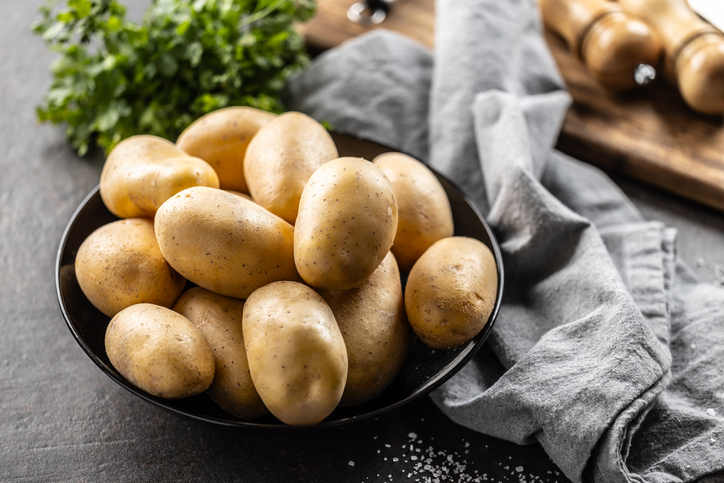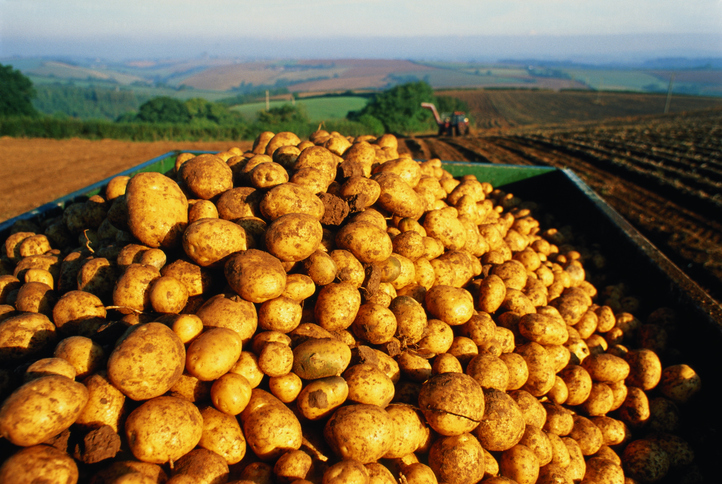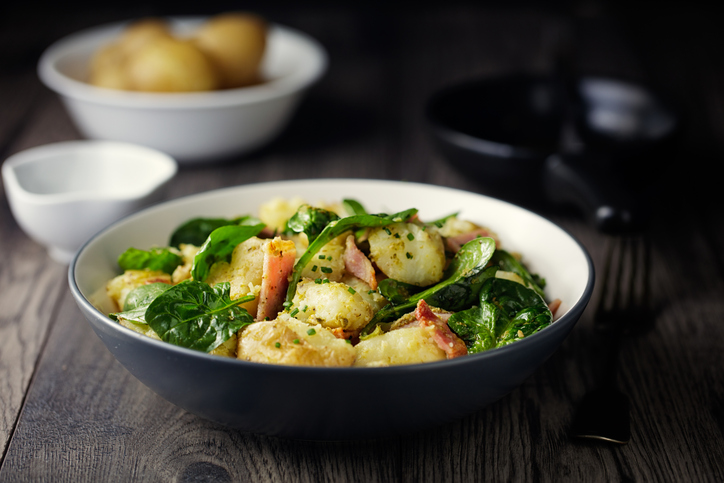It’s Time to Rethink Our Relationship with Potatoes

By Joy Stephenson-Laws, JD, Founder
Even nutritious and healthy foods are subject to fads. One day they are popular and heralded as a “must eat” by nutritionists and chefs alike. And then before you can blink, they become dietary and menu pariahs, banished from home kitchens and restaurants alike. Good examples of these are eggs, poultry skin, butter, coffee, and even sugar and bread. Now we can add the humble potato to this list as evidenced by the fact that we are eating less of them now than ever before.
It wasn't always this way.Thirty years ago, we were consuming over 60 pounds of potatoes per year per person. This translates to a little over a pound of potatoes a week. Given that the average potato weighs around eight ounces, this means we were each eating at least two potatoes a week. Today, according to research, we are down to around 45 pounds per year – a significant drop. This reduction is even more pronounced with fresh potatoes since frozen potatoes are now the choice of American consumers.

How could what had been known as a “miracle food” throughout history (they were first cultivated by the Incas around 8,000 B.C.) have fallen so far out of favor? And is this exile to the junk and frozen food aisles in our supermarkets warranted or deserved?
The answer, in my opinion, is twofold – one, there are a lot of myths out there about the nutritional value of potatoes (I am not talking about sweet potatoes here since they are a different vegetable), and two, is our collective preference for junk and fast food as snacks such as potato chips and French fries.
Let's start with debunking prevalent myths and misperceptions about potatoes:
- Potatoes are classified as vegetables by the US Department of Agriculture and are part of what are known as “nightshade vegetables,” which include such well-known food staples such as tomatoes, sweet peppers and eggplant.
- The predominant nutrient in potatoes is carbohydrates, which are required for the healthy and optimal functioning of our bodies (the other key nutrients are, of course, are protein, vitamins and minerals, water and fats).
- Potatoes are low in calories, have almost zero fat and cholesterol, and are nutrient-dense, being rich in vitamin C, vitamin B, magnesium, iron, phosphorus, antioxidants, fiber, phytochemicals, potassium, and protein.
- Even if you are following a lower carb eating plan, potatoes can and should still be included in your diet given their nutritional profile.
- Potatoes are considered by nutritionists to be a prebiotic – they help maintain a healthy gut microbiome which improves digestion and supports immune health.
- Potatoes may help reduce inflammation and constipation as well as contribute to healthier bones and heart health.
- If you are diabetic, the American Diabetes Association (ADA) says that starchy vegetables such as potatoes can be part of a healthy diet if you are managing diabetes – how many of them you eat is what is important.
So, it’s safe to say that there is really no reason why you shouldn’t include potatoes in your and your family’s diet. The problem is not with the potato per se but rather how we prepare and consume them. Even the healthiest food can be detrimental to our health if not prepared correctly. A great example of this is a salad – a bowl of fresh vegetables is very healthy until you cover it with a salad dressing full of calories and fat.

Rather than boiling, baking or broiling potatoes – the healthiest way to cook them -- today we either fry them at home or purchase them already fried in the form of potato chips or frozen hash browns and French fries. While these cooking methods don’t change the nutritional profile of the potatoes themselves, they add a lot of salt and fat, neither of which are good for us. If you consider foods such as “loaded fries,” the situation becomes very clear.
To give you an example of how much we have moved the potato from the “healthy” to the “unhealthy” column, consider that we now eat almost 21 pounds of frozen fried potatoes and almost four pounds of potato chips annually.

It’s time to go back to basics with how we prepare our potatoes. But going back to basics (baked, roasted, steamed, air-fried, boiled) does mean that our potato dishes need to be boring. Some things you can do to make them more interesting while enhancing their nutritional profile include:
- Top your potatoes with other veggies (I like broccoli and arugula on mine)
- Use olive or avocado oil to enhance their flavor and add the benefits of healthy fats.
- Add roasted and cooled potatoes to healthy salads (use lemon, Greek yogurt or vinegar and olive oil as dressing).
- Make a complete meal by making a casserole of potatoes, lean protein and veggies topped with low-fat cheese.
Remember to leave the skins on potatoes/ Also, don’t eat green potatoes – in addition to tasting awful, they can make you sick.
If you are not sure about how potatoes can fit into your healthy diet or if you are managing diabetes or other health issues, be sure to consult a competent healthcare professional. I would also suggest you consider getting a nutrient test to ensure your body is getting all the nutrients it needs and in the right amounts.
Enjoy your healthy life!
The pH professional health care team includes recognized experts from a variety of health care and related disciplines, including physicians, attorneys, nutritionists, nurses, and certified fitness instructors. This team also includes the members of the pH Medical Advisory Board, which constantly monitors all pH programs, products, and services. To learn more about the pH Medical Advisory Board, click here.







